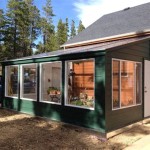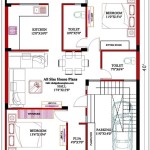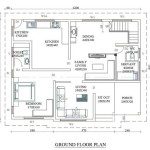Plans for Cubby Houses: A Comprehensive Guide
Cubby houses offer children a dedicated space for imaginative play, fostering creativity and social skills. Careful planning is essential to ensure the cubby house is safe, functional, and enjoyable for years to come. This guide outlines key considerations and steps for planning a successful cubby house project.
Location, Location, Location: Choosing the right spot in the yard is paramount. Factors to consider include visibility from the main house, proximity to shade for hot days, drainage to prevent waterlogging, and level ground for stability. Additionally, consider leaving adequate space around the cubby house for outdoor play activities.
Size and Design: The size of the cubby house should be appropriate for the children’s ages and the available space. Consider future needs as children grow. Design options range from simple single-room structures to more elaborate multi-level designs incorporating features like slides, swings, and climbing walls. Sketching the desired design helps visualize the final product and identify potential challenges early on.
Materials Selection: Choosing durable and weather-resistant materials is crucial for longevity. Common options include timber, plastic, and metal. Timber offers a classic aesthetic and can be easily customized, while plastic is low-maintenance and resistant to rot. Metal offers strength and durability but may require more specialized construction techniques. The chosen materials should comply with local building codes and safety regulations.
Foundation and Flooring: A stable foundation is essential for safety and structural integrity. Options include concrete slabs, timber decking, or paving stones. The chosen foundation should provide adequate drainage and prevent moisture buildup. Flooring materials should be safe, comfortable, and easy to clean. Consider options like plywood, timber decking, or rubber mats.
Framing and Walls: The framing provides the structural skeleton of the cubby house. Common framing materials include timber or metal studs. Ensure the framing is robust enough to support the roof and withstand wind and other environmental forces. Wall cladding can be timber planks, weatherboarding, or plastic panels. Proper insulation can enhance comfort in varying weather conditions.
Roofing: The roof protects the cubby house from the elements. Common roofing materials include asphalt shingles, metal sheeting, or timber shingles. The roof design should ensure adequate drainage and ventilation to prevent moisture buildup and rot. Consider adding gutters and downspouts to direct rainwater away from the structure.
Windows and Doors: Windows provide natural light and ventilation. Ensure the windows are securely fitted and positioned at a safe height for children. Doors should be sturdy and easy for children to open and close. Consider adding safety features like finger guards to prevent pinching accidents. Screens can be added to windows and doors to keep insects out.
Safety Features: Safety is paramount in cubby house design. Ensure all materials are non-toxic and splinter-free. Handrails should be installed on stairs and elevated platforms. Sharp edges and corners should be rounded or covered. Regularly inspect the cubby house for potential hazards and address them promptly.
Building Permits and Regulations: Check local building codes and regulations before commencing construction. Some jurisdictions require permits for cubby houses exceeding a certain size or height. Ensure the design and construction comply with all applicable regulations to avoid potential legal issues.
Budgeting and Cost Considerations: Developing a realistic budget is essential. Factor in the cost of materials, tools, and any professional labor required. Shop around for the best prices on materials and consider cost-saving options where possible without compromising safety or quality.
Construction Timeline and Project Management: Develop a realistic timeline for the project, taking into account weather conditions and availability of materials and labor. Break the project down into smaller, manageable tasks. Proper project management ensures the project stays on track and within budget.
Maintenance and Upkeep: Regular maintenance is essential to prolong the lifespan of the cubby house. Inspect the structure regularly for signs of wear and tear, such as rot, loose boards, or damaged roofing. Address any issues promptly to prevent further damage. Apply a weather-resistant sealant or paint to protect the timber from the elements.
Landscaping and Surrounding Area: Consider the landscaping around the cubby house to create a safe and appealing play area. Install soft surfacing like bark chips or rubber mats under swings and slides to cushion falls. Plant trees or shrubs to provide shade and privacy. Create pathways and seating areas for adults to supervise and enjoy the space.
Customization and Personalization: Encourage children to personalize their cubby house with decorations, artwork, and furnishings. This allows them to take ownership of the space and fosters creativity and imagination. Consider adding themes to the cubby house, such as a pirate ship, a castle, or a space station, to enhance the play experience.

How To Build The Perfect Cubby House Make A

Country Cottage Cubby House Kitwood Group Pty Ltd

Queenslander Cubby House Outdoor Playhouse Kitwood Group Pty Ltd

Alpine Lodge Cubby House Kitwood Group Pty Ltd

Country Cottage Cubby House Kitwood Group Pty Ltd

Wallaby Lodge In Kitwood Group Pty Ltd

Top 10 Cubby House Plans In Roof Shingles For N Homes

The Cubby House Build

Queenslander Cubby House Outdoor Playhouse Kitwood Group Pty Ltd

Top 10 Cubby House Plans In Roof Shingles For N Homes








